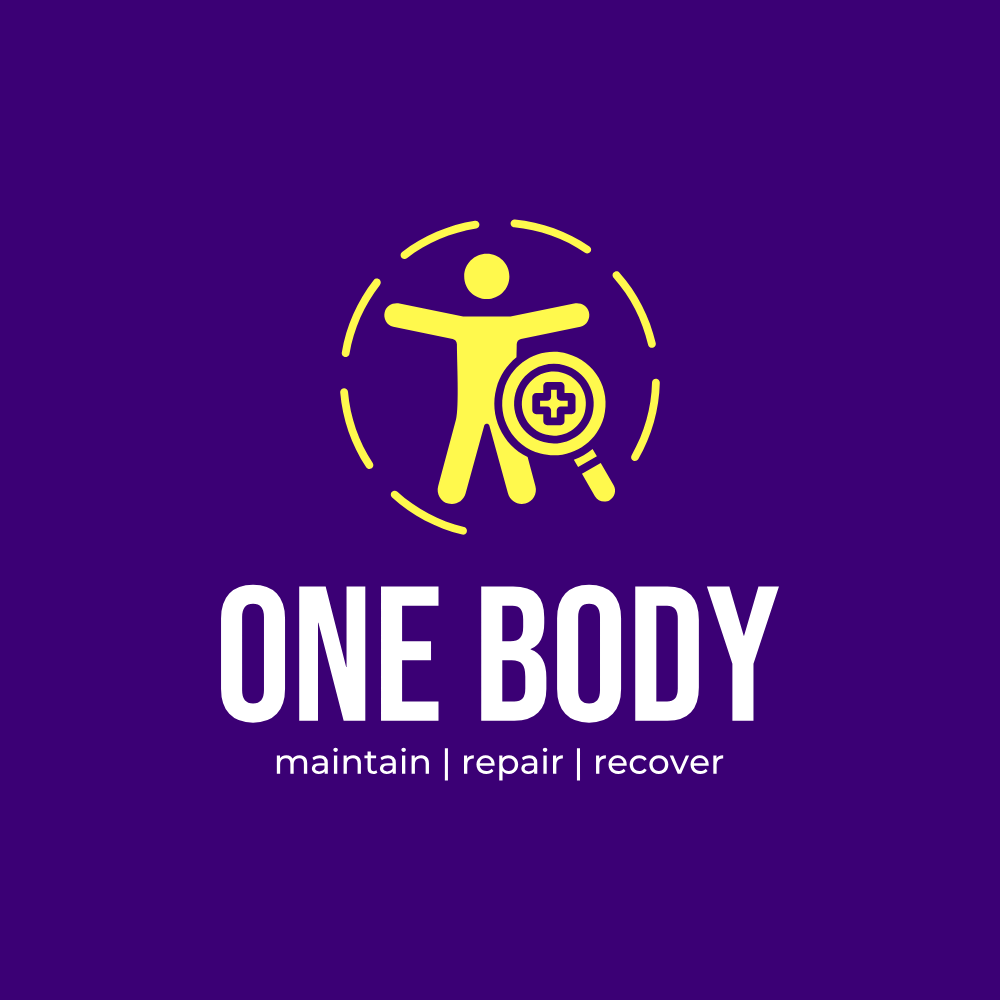The Shoulder: A Complex Joint With Big Responsibilities
By One Body | Supporting You Through Strength, Movement & Recovery
The shoulder is one of the most mobile and vulnerable joints in the body — and one I treat every single day in clinic. It’s involved in nearly every upper-body movement, and due to its complexity and high demand, it’s prone to injury, stiffness, and dysfunction.
Function: Arm movement in all directions; overhead reach, rotation
Common Issues: Rounded shoulders, impingement, limited overhead mobility
Key Movements:
Shoulder rolls (forward/backward)
Arm circles
Cross-body shoulder stretch
Overhead reach with side bends
Eagle arms or behind-back clasp
🔄 The Chain Reaction
The shoulder rarely works in isolation. It’s directly influenced by:
Your mid-spine (thoracic) mobility
The position of your neck and head
Your hips and posture — yes, even hip tightness can affect shoulder movement
And how you sit, stand, carry, and move throughout the day
That means poor posture, old injuries, and modern habits can all take a toll.
🚨 What I See Day to Day
I treat a huge number of shoulder-related injuries and dysfunctions, such as:
✔️ Rotator cuff strains
✔️ Shoulder impingement
✔️ Bursitis or tendinopathy
✔️ Frozen shoulder
✔️ Repetitive strain from work
✔️ Nerve entrapment or radiating pain
✔️ Postural stiffness
✔️ Old trauma or dislocations that never fully healed
🧠 Why Is Shoulder Pain So Common?
🔸 Too Many Moving Parts
The shoulder has a complex combination of muscles, tendons, ligaments, bursae, and nerves — all trying to work together while maintaining extreme mobility.
🔸 Posture & Mid-Spine Stiffness
Most people lack proper thoracic (mid-back) extension — this reduces how much range the shoulder can access overhead or behind the body.
🔸 Bag Straps & Bra Fitting
Yes — ill-fitting bras and one-strap handbags worn daily create long-term nerve irritation, muscular imbalances, and tension — especially in older women.
🔸 Desk-Based Repetitive Strain
Poor desk set-ups, post-Covid work-from-home habits, and repetitive mouse/keyboard use lead to chronic tightness, nerve compression, and fatigue.
🔸 Frozen Shoulder (Adhesive Capsulitis)
Very common in women over 50, this condition can come on suddenly or after minor injury, and cause severe pain and restricted range of motion for months to years.
🔸 Shoulder Pain ≠ Always Just the Shoulder
Tightness in your neck, hips, or core often shows up in your shoulder's movement.
💡 Left-sided shoulder pain can even be a red flag for heart issues — something many overlook. Always best to check with a health professional.
🏡 Everyday Causes That Build Up Over Time
🔹 Carrying bags on one shoulder
🔹 Poor posture in the evenings
🔹 Working on sofas or beds with laptops
🔹 Sleeping with arms overhead or under pillows
🔹 Slouched sitting and rounding shoulders forward
🔹 Tight pecs and weak upper back muscles
🔹 Not warming up before workouts or repetitive lifts
💪 The Cost of Ignoring Shoulder Health
When we ignore early warning signs like tension, dull aches, clicking, or stiffness, these small issues evolve into chronic injuries.
Left unaddressed, this may result in:
Reduced mobility
Sleep disruption
Compensations elsewhere (neck, elbow, wrist)
Emotional stress from persistent pain
Difficulty lifting, working, or exercising
🧘♀️ How to Support Shoulder Function
✅ Improve thoracic mobility with specific stretches and mobility drills
✅ Strengthen the rotator cuff and scapular stabilisers
✅ Keep your neck and hips mobile to support full-body balance
✅ Invest in ergonomic workspaces
✅ Be mindful of your carrying and sitting habits
✅ Seek help early — don’t wait for it to “lock up”
📣 Final Thought: It’s More Than Just a Shoulder
The shoulder is a whole-body joint.
Pain here may be caused elsewhere, and recovery requires a full understanding of how you move, sit, work, and live.
Your shoulder doesn’t have to be a weak link. With consistent, personalised care, you can:
Restore full mobility
Rebuild strength
Prevent re-injury
Feel confident using your upper body again
📅 Need help with shoulder pain or mobility?
Let’s create a recovery plan that addresses your whole body — not just the symptom.
Book with One Body today and start moving, lifting, and living pain-free.

